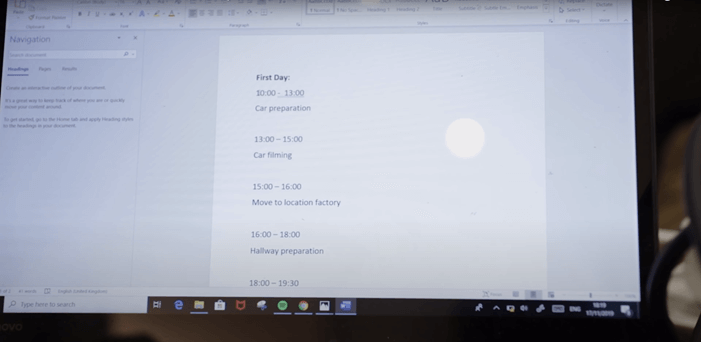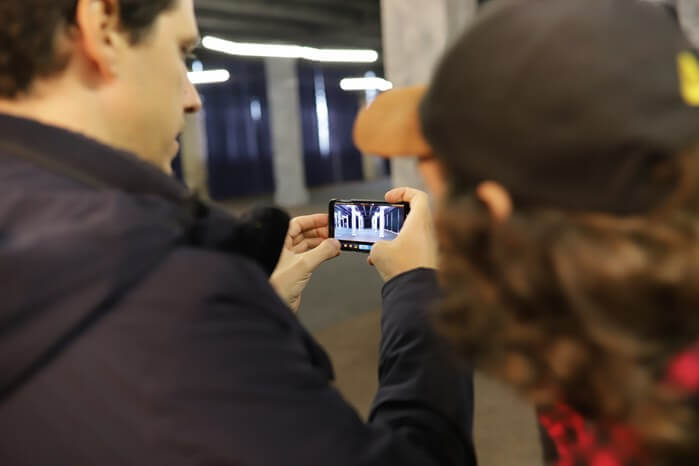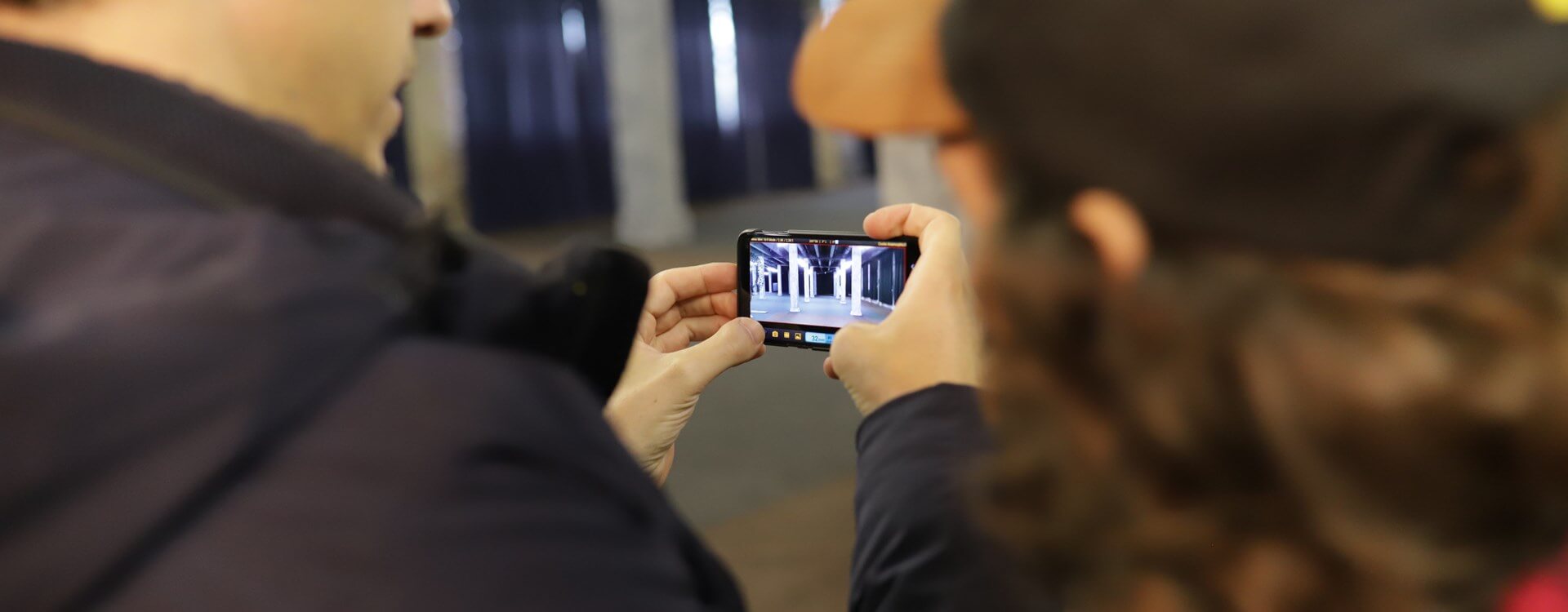Highlights
Table of Contents
Explore article topics
There’s a mantra you should repeat every time you feel like rushing into your production: “Whatever you don’t prepare for, you pay for in the performance.” You feel the script is on fire, and this project is ready to jettison your career. Not so fast! Pre-production is not just one of the stages of production but a crucial foundation that ensures the rest of the process goes smoothly. With a bit of guidance and patience, you’ll be able not just to enjoy the pre-production process, but love it.
What is it?
What is a good pre-production definition? When we talk about pre-production, we typically refer not just to the time before production, but to all the necessary work needed to ensure your ducks are in a row before you begin shooting. Film pre-production can differ from video pre-production in scale (a 100-million-dollar movie is different from making a commercial), but the elements are consistent in either process. No matter the size, here are some steps you’ll find across projects on multiple platforms.
Shooting script

First off, you’ll want to take your final draft of the screenplay and turn it into a shooting script. This script breakdown process involves color-coding your script according to the elements that signify the different production departments: locations, casting, effects and camera. These colors act as directors to the different departments for what to expect the day of the shoot and how to best prepare for the work ahead. This is also a way to recognize what is necessary and perhaps make last-minute changes if the total costs run too high.
Storyboard
When creating a storyboard, you have one department in mind: camera. This goes perfectly after your shooting script since it allows you to create a visual representation of the story. Here, you can block your shot for each scene, choose your frames for each system, and even decide which lens might work best. This stage of production allows you to “see” the movie before it’s shot and even change course if your cinematographer offers new ideas. It will enable you to be collaborative and save precious time you might otherwise waste making decisions on set.
Budgeting and scheduling
This is one of the stages of production that cannot be ignored. Even worse than missing that “perfect shot” is running out of money, so having a proper and clear-eyed budget can save you this inconvenience. There is pre-production software that can format it for you, but you can make a production budget any way that works for you.

At this stage, you can also put together a shooting schedule that allows you to plan out your days. Your producer can see how much each day of shooting will cost and determine ahead of time the production constraints. This frees you up in that you can be creative with the parameters determined and hopefully make the most of the fixed number of days set out.
Hiring and casting
The success of your project will be determined by the quality of talent you bring on board. Filmmaking, at its core, is a collaborative process. The project’s strength depends not just on a clear vision but also on the ability to carry it to completion.
Assuming you have early hires finished (producer, writer, director of photography, etc.), you’ll now move on to hiring for other departments. Typically, your producer will have long-standing relationships from previous productions. If so, you can lean on that resource and trust her to bring in the right people. Similarly, your cinematographer usually has a list of camera crew members they know and trust. No matter how you recruit, you’ll ultimately want to meet and get to know them and secure solid department heads as soon as you can.
Assuming you’ve hired a casting agent, it’s time to begin searching for talent. Perhaps you’ve written the script with some or all parts in mind, but perhaps not. The casting process is meant to give you options and maybe even discover something about a given character you didn’t recognize until you saw an actor deliver something unique.
Even if you have people in mind for certain roles, the casting process is still crucial in the event things don’t work out with that actor on set. While no one hopes that happens, you can pivot at the last minute to your catalog of strong actors you saw audition. The casting process is an essential part of pre-production, allowing you flexibility and freedom in the event of unforeseen circumstances.
Locations and equipment

Your setting is a character in your story. A good location can serve that character, and a bad one can distract from the other wonderful elements. Finding a location manager may be your safest bet in finding someone who has an encyclopedic knowledge of places and is aware of the hurdles of red tape to secure a location for your shoot. Although you can fly solo, having someone knowledgeable on your team can give you peace of mind that the location is secure once shooting begins.
Locations also tie into another component of pre-production: storyboarding. Often, unless you’re shooting on a soundstage, you’ll need a location before you’re married to a particular shot. Knowing where you’ll be, how the light is in that particular setting and how you’ll actually be able to move the camera in a given space will inform the shots you choose.
Equipment is another area to consider. Whether deciding on film vs. digital, Steadicam vs. dolly shots, or practical effects vs. CGI, you’ll want to work within your budget and vision to shop around. You’ll also use this time to buy other products, such as wardrobes, makeup and props. You also may want to visit a select rental house and see if you can negotiate a package deal to get a discounted rate.
Get unlimited royalty-free 4K footage
Dotting your i’s and crossing your t’s
Nearing the end, make sure that you’ve secured any legal snags that can haunt you, i.e., permits, talent release forms, location contracts, liability insurance, etc. These steps will give you peace of mind that the pieces are secure and everyone’s safety is secured as well. Insurance comes in handy also in the event that locations or equipment get damaged or destroyed. Nothing can take the air out of the room more than an accident, but you can have peace of mind that a mistake won’t be a death sentence.
That’s a wrap
In sum, the pre-production process is multi-layered and critical to ensure a smooth shoot. No matter the scale, you’ll want to include these elements to make sure you show up ready to make movie magic. Apart from the preventive nature, it can also be fun as you begin to make the transition to bringing your story to life. As long as you’re thorough and flexible, the pre-production process can engage your creativity as much as any other part of the movie-making journey.
Jonathan Mateer is a writer based in California. Currently attending UC Berkeley, he covers topics such as filmmaking, storytelling, politics and culture.
Share this article
Did you find this article useful?
Related Posts
- By Artlist
- 4 MIN READ
- By Artlist
- 4 MIN READ
Latest Posts
- 17 Apr
- By Daniela Bowker
- 7 MIN READ
